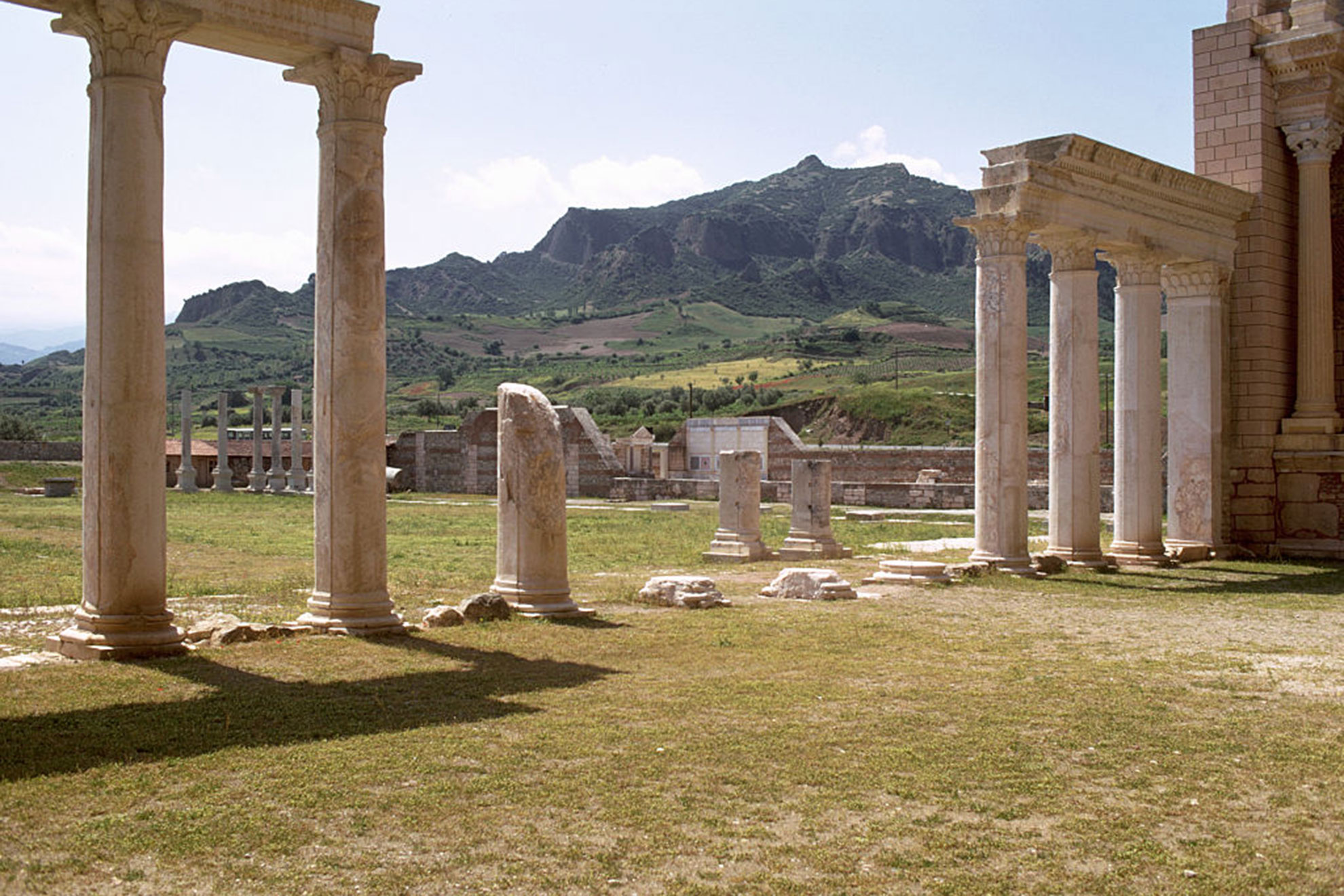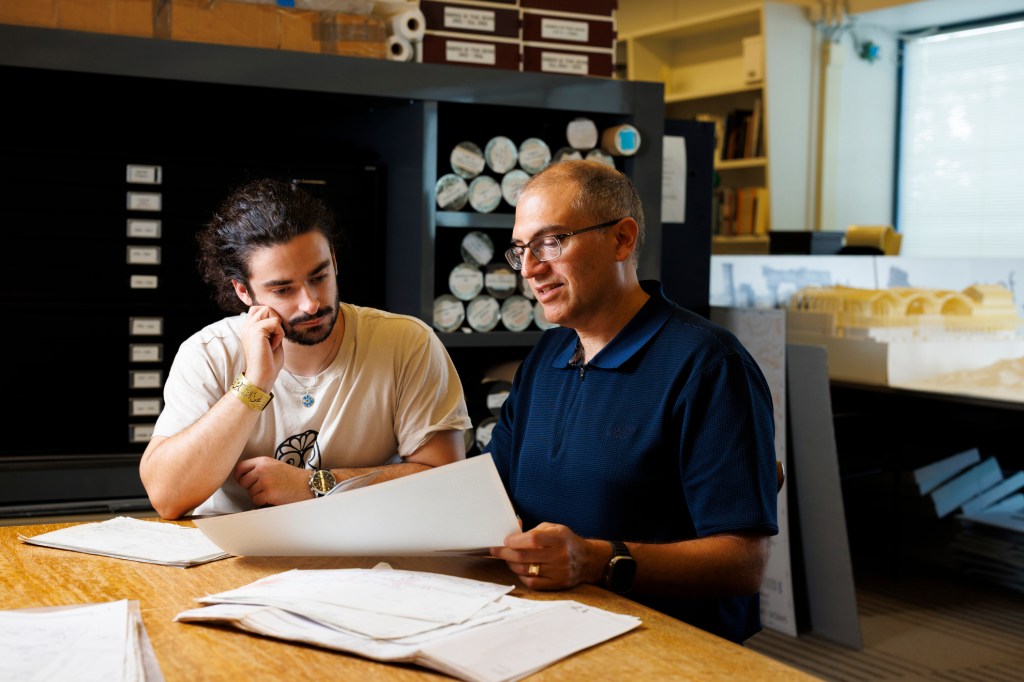Sardis named a UNESCO World Heritage Site

Sardis named a UNESCO World Heritage Site
Designation comes as Harvard’s decadeslong archaeological dig uncovers new secrets from remains of ancient Turkish city
More than 65 years after Harvard scholars began excavating the ancient city of Sardis in Turkey, the United Nations Educational, Scientific and Cultural Organization (UNESCO) named the location a World Heritage Site — endorsing its critical role in understanding ancient people and in turn, ourselves.
“Thanks to this valuable work, not only has a significant chapter of human history been illuminated, but the continuity and interconnectedness of cultures have also been clearly demonstrated,” said Gülnur Aybet, Turkey’s U.N. representative at a July meeting of the World Heritage Committee.
At the meeting, members decided that Sardis — home to the Iron Age civilization known as the Lydians — can help illuminate unique ancient architecture such as fortified walls, ornate sanctuaries, and distinct burial mounds known as “tumuli.” As such, the site extends north to the Lydian Bin Tepe, where workers have discovered more than 100 of the large mounds.

Archaeologists have found some of the earliest coinage at Sardis, as well as remains of a Lydian palace that seems to have survived through multiple empires: Roman, Greek, and Byzantine.
“While I’ve been at the site, I’ve seen the time frame for Sardis expand — even double,” said Bahadir Yildirim, Harvard’s administrative director of the Archaeological Exploration of Sardis. “The site was thought to be from 800 B.C., and now it’s 2400 B.C. So the site’s importance, in terms of the time frame, has expanded.”
The first Harvard excavation of Sardis was led by the late professor of fine arts and curator of ancient art at the Fogg Art Museum George M.A. Hanfmann in 1958 as a joint effort with Cornell. During that initial dig, the team of 15 scholars discovered Lydian pottery, coins, sculptures, and walls.
Since then, the project has grown, with an average of 50 to 60 scholars and students from around the world joining a similar number of local diggers for three months every summer.
“In the past couple of years, we found remarkable evidence of Lydian habitation,” Yildirim said. “There’s a lot of references to Sardis in texts from the Greek and Roman cultures and also from the Near East, but there was not a lot of archaeology to help understand. So we have this domestic quarter that’s coming up for the first time where you can get a wide expanse of houses and streets and how they lived.”
Fernando Casamayor Molina, a second-year Ph.D. student in the Aga Khan Program for Islamic Architecture and Middle Eastern Studies, was one of four Harvard students who worked on the Sardis site this summer. He specializes in architectural archaeology and helped direct some of the digging.
“In my trench, we found what we think is earthquake debris and in the same trench a part where the earthquake debris had been removed and the marble floor had been removed in antiquity,” he said. “It’s very interesting to see how people react to these natural catastrophes and how their spaces change because of that.”
Local men and women have been involved in the digging at Sardis. This past summer, regional director for U.N. Women Europe and Central Asia Belén Sanz Luque visited the site to see the ongoing work on restoring mosaics at an ancient synagogue — the largest of the ancient Jewish diaspora uncovered to date.
“You can now see and understand the geometry and the motifs,” Yildirim said.
He added that a group of local women were instrumental in conserving the ancient temple of Artemis — one of the largest and best-preserved Ionic temples in the world —at the site. “It was black from the accretion caused by bacteria. And through the analysis of bacteria the conservation team managed to figure out a formula to transform the ecosystem on the marble and all that accretion disappeared, and it stayed clear,” he said.
“They really take it on as part of their own heritage,” he added. “Conservation and how it brings the community together is important for us.”
Casamayor Molina, who worked with some of the women in his trench, said the cultural connection was one of the most rewarding aspects of working the site.
“At the end of the day, you’re excavating their heritage,” he said. “It speaks to who we are as human beings and on our identity.”
Harvard continues to work closely with ambassadors and community partners in Turkey to keep the doors to discovery open. The excavation is conducted with the permission of the Turkish Ministry of Culture and Tourism, and the application for the UNESCO designation was filed by the Turkish government.
“We’re one part of a bigger picture,” Yildirim said. “The local mayor, the governor’s office — everyone is part of a multi-institutional collaboration.”
There is a Sardis playlist on the Harvard Art Museums’ YouTube channel for recorded lectures and videos about the on-site work of the Harvard–Cornell excavation team, as well as the Sardis Expedition YouTube channel, featuring drone videos of the excavation sites.
“At the end of the day, it sheds light into a very important site,” Casamayor Molina said of the UNESCO designation. “This site can offer a lot of information about how people lived in the past, across the same region, across different time periods, and that’s very important.”
Latest Harvard
- Time for mandatory retirement ages for lawmakers, judges, presidents?Americans seem to mostly say yes; legal, medical scholars point to complexities of setting limits
- In dogs, as in humans, a harsh past might bare its teethEarly adversity leads to higher aggression and fearfulness in adult canines, study says
- Brief bursts of wisdomAphorism lover and historian James Geary reflects on how ancient literary art form fits into age of social media
- Flew home as Will Flintoft, returned as Rhodes ScholarApplied math concentrator to study computer science, theology with eye toward AI
- What will AI mean for humanity?Scholars from range of disciplines see red flags, possibilities ahead
- Tai Tsun Wu, 90Memorial Minute — Faculty of Arts and Sciences






